We loved Uganda (it ranks among our favorite countries visited on this trip), but we were looking forward to Ethiopia. We weren’t just excited about the food or the famous sites (although we were excited about both!), but because Ethiopia would be so different from the countries we had visited in Southern and East Africa. Just for starters, Ethiopia’s national language, Amharic, is not written in Roman characters, and Ethiopia uses the Julian calendar (rather than the Gregorian calendar) and therefore is seven years behind the rest of the world.1
We were also looking forward to taking a breather in Addis Ababa. Our plans for the Ethiopian capital included picking up Egyptian and Sudanese visas,2 and so we anticipated having some time to kill. After thirteen days of near-constant travel in Uganda, that didn’t seem like such a bad thing. We didn’t realize how much time we would need to kill, but that’s another story . . .
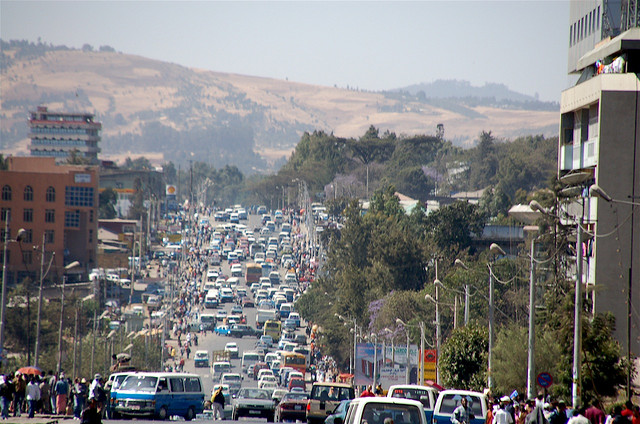
We ended up spending one week in Addis, during which time we endured a lot of rain, mastered the public transportation system, visited both the National and Ethnological Museums, and ate a lot of pizza. (We also exerted a lot of mental anguish over our travel plans to Sudan, but we’ll tackle that debacle in our next post.)
Visiting Ethiopia in the Rainy Season
The conventional wisdom on Ethiopian travel seems to be that August – a month during which it rains an average of 270mm (over 10.5 inches) in Addis – should be avoided, if possible. One of the downsides of a long trip like ours, however, is that you can’t be in every country during its most ideal season. Sometimes you arrive during rainy season, like we did when we landed in Ethiopia on August 18th. Exacerbating the situation, Addis is the fifth highest capital city in the world, lying at an elevation of 2,300 meters (over 7,500 feet), so the temperature quickly plummeted each time it rained, and it rained every day.
That said, the rain wasn’t as bad as we had anticipated. Although it rained each day, but it never rained all day. We had an umbrella, and we spent one afternoon scouring the malls to find me a replacement pair of closed-toe shoes since my trekking shoes had disappeared in Uganda. We finally found a pair of knock-off Airwalks. They’re not much for style (worn with my cargo-pocketed adventure pants and my new striped zip-up hoodie, all I need is a necktie to be an early-aughts Avril Lavigne), but they kept my feet and toes safe from the wet, mucky debris that lined the Addis streets.
Luckily, one doesn’t have to spend much time outside to enjoy Addis Ababa. The public transportation system is fairly comprehensive (saving you from walking too far in the rain) and there are several museums to allow you to spend your time sightseeing indoors.
Public Transportation
Addis is currently being fitted for a light rail system. Operation is slated to begin in 2015 (our time), and we can only imagine it will be a game changer. The main squares and arteries of the city are currently a mess of rubble while construction is underway.
In the meanwhile, though, there are the shared taxis.
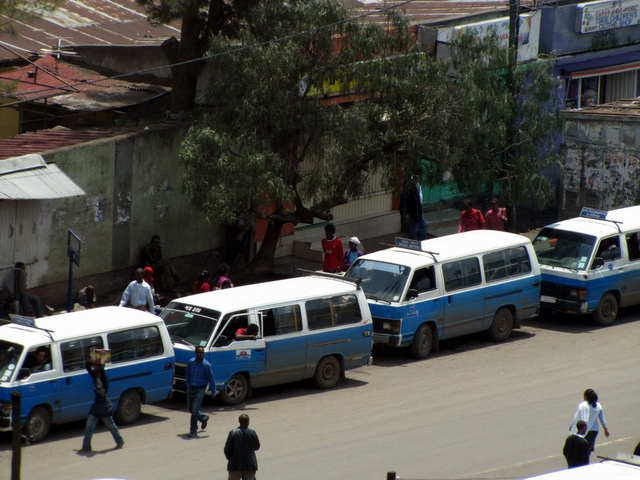
It can be daunting to navigate a new shared taxi system each time you arrive in a new destination: you have to try to guess where each minibus is headed, how much a ride costs, and what the local conventions are for standing/squatting in the aisles or on strangers’ laps.
It can be even more difficult where, as in Ethiopia, the language is written in non-Roman characters. While the minibuses had signs about them that spelled out what I assume was their final destination, the symbols were incomprehensible — and unmemorable — to us. Nevertheless, I am pleased to report that we prevailed and transited ourselves around Addis via public transportation — a major plus since it was often raining and non-shared taxis were unreasonably expensive, even after undue amounts of haggling.
National Museum
The National Museum is something of a weird one. One half of the first floor houses a fairly modern display on the origins of man. It showcases a variety of early hominid skeletons that where unearthed in Ethiopia, and includes items like casts of the famous Lucy skeleton (the real one is kept in the museum’s archives) and a 3D-printed reconstruction of a skull, along with plenty of information and context.

The second half of the first floor then opens first onto an interesting collection of Ethiopian artifacts (many which are labeled, but which lack the information and context found in the origins of man exhibit) and then onto a center room crammed with objects of grandeur, including regalia of previous rulers and massive wooden thrones.
The second floor contains an eclectic collection of art. Museum patrons are kept at a safe distance from the art by a string barricade, and so the labels (when present) were difficult to read.
The third floor was the strangest by far. The room is lined with glass cases full of objects, but almost none of them are labeled. One case, on the other hand, contained nothing but a label – its presumptive contents were housed in a free-standing case inexplicably set up in front of the glass case.
As we left, we looked at some of the objects in the museum’s front yard. There were information placards about various UNESCO world heritage sites located in Ethiopia, replicas of famous items in other places in Ethiopia, … and a large carved Olmec head, given to Ethiopia as a gift by Mexico. At the time, I found it exceedingly bizarre – it seemed like they didn’t know what to do with the gift and had just plopped it down in the museum’s yard. Marc, however, did a bit of internet sleuthing and learned the head is usually, and more fittingly, housed in Addis’s Mexico Square,3 which is currently ripped up by light rail construction.
Ethnological Museum
The Ethnological Museum is touted as one of the better museums in Africa, and although it was definitely a step above many of the other African museums we have visited, we found it to also be somewhat strange. It has an interesting concept: the museum is organized as a life cycle. In other words, rather than showcasing all items from a particular group of people in one section, and all items from another group of people in a different section, items from various groups of people that all relate to birth, or marriage, or death, are displayed together. The museum is definitely more well-cared for than the National Museum, but it was still somewhat difficult to crowd around the plaques with other tourists.
The museum is housed in one of Emperor Haile Selassie’s former palaces, which now is part of the Addis Ababa University campus, and some rooms are devoted to royal objects.
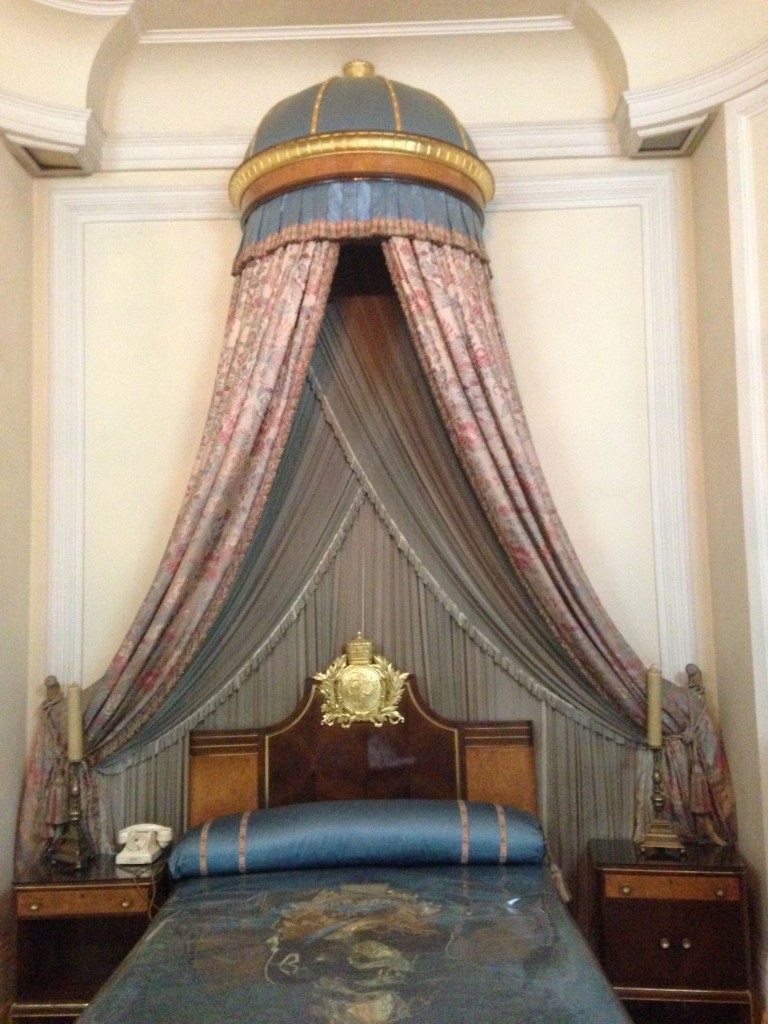
The top floor of the museum displays art, but it was so poorly lit that it was difficult to tell what exactly you were looking at.
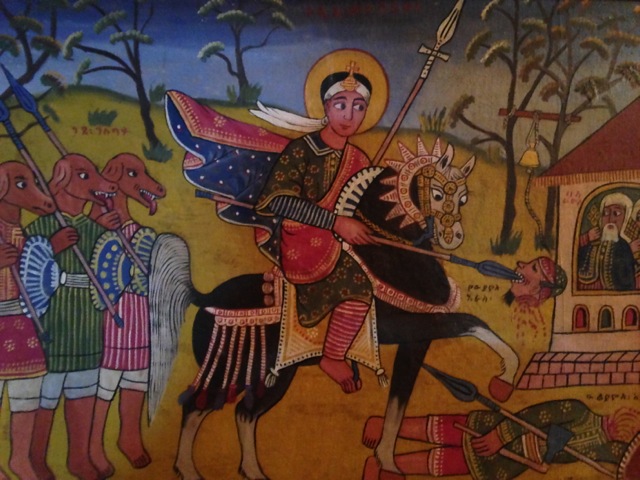
Pizza
The amount of pizza that we ate in Addis Ababa is a little embarrassing. It seems so stereotypically Western-tourist to come to Ethiopia and eschew the injera4 in favor of something a little more familiar, but I promise that’s not how it went down. We love Ethiopian food. We eat it at home all the time. We had been looking forward to traveling to Ethiopia for the purpose of eating Ethiopian food.
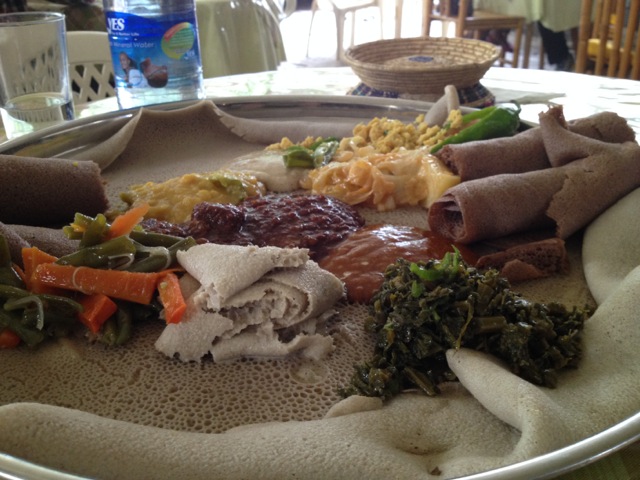
But we were wary of overdoing it on the Ethiopian food in the first few days of arrival, since we had heard that basically most of the food outside of Addis was all Ethiopian, all the time. That being said, some of the best Ethiopian food in all of Ethiopia can be found in Addis.
And then we discovered that the pizza place down the street from our guesthouse, called Effoi, had some of the best pizza in all of Africa. After that, we were done for. We ate pizza there five out of six nights in Addis. If that’s not a ringing endorsement, I don’t know what is.

The one night that we didn’t eat pizza at Effoi, there was still pizza on our dinner table. We joined a new friend from our guesthouse to dinner at a restaurant/bar, and he recommended and ordered the pizza. (I couldn’t have any more pizza and got some salad.) He selected the place because he was meeting some Ethiopian girls he had met previously there, and one of them invited us to her birthday party that was happening later that night.
After dinner, we walked with them to a nearby bar called Oh Canada. The open back garden was filled with a mix of locals, expats, and birthday revelers, and we drank St. George beer and danced until one o’clock in the morning.
Finally …
I would be remiss not to mention the rampant begging by children in Addis. Children asking tourists for money or candy is nothing out of the ordinary in Africa, but the begging was more menacing in Addis. Children would swarm us, sometimes carrying sticks, sometimes holding cloths to conceal their hands so that they could try to reach into our pockets,5 and keep close to us even when we tried to move away. The only way I could figure to get them to leave us alone was to create a scene, shouting “Go away!” and “Don’t touch me!” Having to yell at children never leaves you feeling very good.
I hate ending posts on a negative note, so here’s a picture of one of our favorite discoveries in Ethiopia: mixed juice. This particular juice is layered strawberry, avocado, guava, and mango.
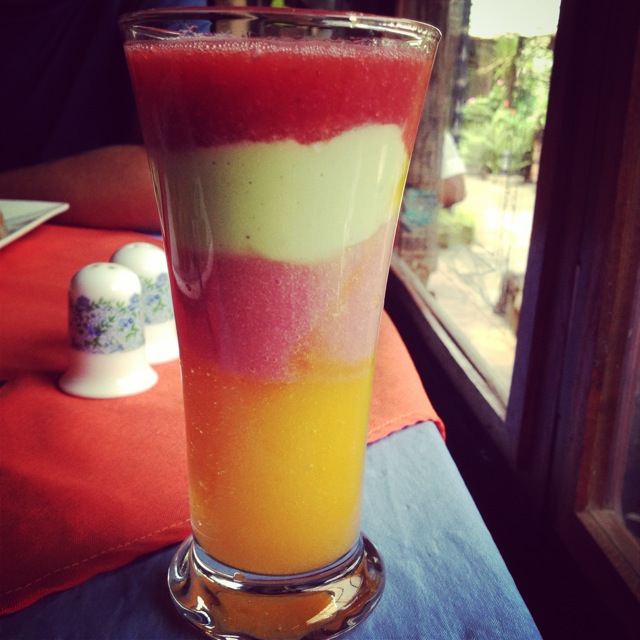
Where We Stayed:
☆ Mr. Martin’s Cozy Place. Five goats. We loved it here (and thank goodness, because we ended up staying for six nights). It’s located on a side street just off of a major thoroughfare, near restaurants and within walking distance of one of the public transportation hubs. It is also understandably popular with other travelers, and we had a good time with some people we met there. Also, our large room with a little terrace was a great value. (Pro tip: Don’t tell the immigration officer that you are staying at “Mr. Cozy’s,” however, unless you want her to laugh at you.)
Where We Ate:
☆ Dashen. Amazing Ethiopian food and nice atmosphere. Most of the other patrons were locals, but the menu is also printed in English (hooray!). We particularly enjoyed the beyenetu – assorted fasting foods – and doro wat – chicken stew.
☆ Lime Tree. Bright, cheerful restaurant/coffee shop. Nice place to hang out and use the free wifi. The lime juice with mint is fantastic, as is the tofu-eggplant sandwich (although give the falafel sandwich a pass). There’s no outdoor signage; look for the Boston Day Spa and then head for the second floor.
☆ Effoi. Do I have to reiterate how much we loved this place? If you like spicy stuff (like we do), order the tibit pizza.
☆ Lucy Cafe. Conveniently located near the National Museum (hence the name), this is a good place to eat and rest up before or after the museum. Also the site of our first mixed juice!
☆ MK’s. This is where we had dinner before attending our first Ethiopian birthday party. It’s kind of a scene, but I loved my grilled vegetable salad.
☆ Ethiopian restaurant near corner of Mike Leyland and Ghana streets, which looked like a tiki bar. (I’m not sure that it had an English sign – if it did, we never saw it to catch its name.) A friend from our guesthouse took us here for lunch. The fasting food was good (although it included french fries, which I found odd), and we also had a lamb dish that was really nice.
1 We ended up eventually leaving Ethiopia a couple of days before Enkutatash (Ethiopian New Year), when the calendar rolled over from 2006 to 2007.
2 As mentioned in a previous post, the original iteration of this trip had us traveling overland from Southern Africa to Cairo. Although, after much soul-searching, we had decided to fly over Kenya, we still planned to adhere to the rest of our land-based plan.
3 As our next post will explain, Mexico Square was a place we came to know frustratingly well, as the Sudanese embassy is located there.
4 Injera, for the uninitiated, is a flatbread made from tef (a cereal grain) and the national staple of Ethiopia. Stews and sauces and served on top of a piece of injera, and injera is used as an edible utensil.
5 Their attempts to pick our pockets were so obvious, however, that they never even got close.

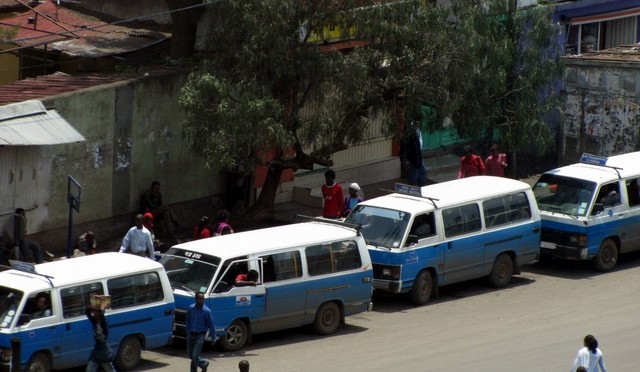

The adventure pants! I had forgotten about them! 🙂